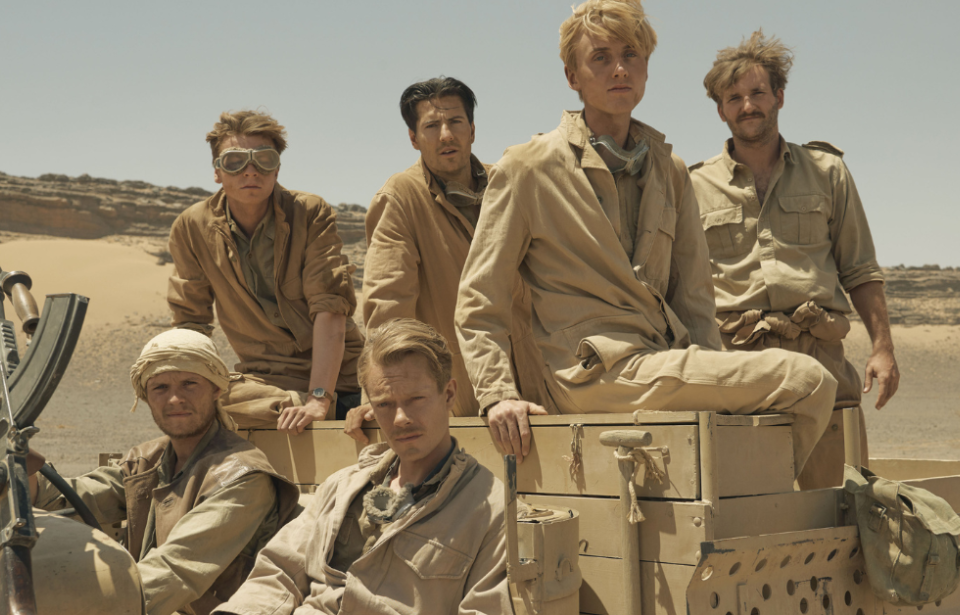SAS: Rogue Heroes (2022-present) premiered on BBC One in October 2022. The six-part miniseries centers around the creation of the British Army’s Special Air Service (SAS) during World War II and its actions during the North Africa Campaign, and is a semi-accurate representation of the events laid out in the Ben Macintyre book of the same name.
Initially intended to run for just one season, SAS: Rogue Heroes was so popular that the BBC commissioned additional episodes, this time centered around the SAS’ operations in Western Europe. Given how successful it’s become, we felt it might be useful to provide some background information on the real-life soldiers who serve as the show’s main characters.
Archibald David Stirling
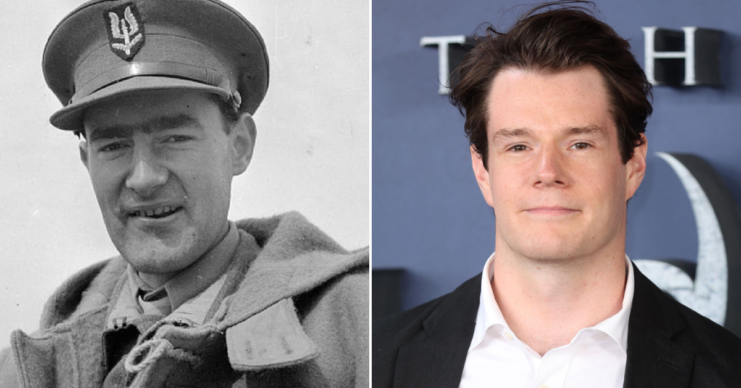
Nicknamed “The Phantom Major” by Generalfeldmarschall Erwin Rommel, Archibald David Stirling is portrayed by Connor Swindells in SAS: Rogue Heroes. He was born into an aristocratic Scottish family with a history of serving in the military, but during his youth opted to enjoy the local nightlife, drinking and gambling, instead of completing his studies. He eventually joined the Scots Guards as a reservist and became a mountaineer, with a dream of becoming the first person to climb Mount Everest.
When the Second World War broke out, he was working as a cowboy in the United States. He returned to the United Kingdom and rejoined the Scots Guards, but found his time with the regiment to be tedious. He then enlisted with a Commando group known as Force Z (“Layforce”). Stirling was deployed with them to the Middle East, where they suffered heavy casualties during the battles of Crete and the Litani River.
Again dissatisfied with his service, Stirling came together with Neil Ritchie and John Steel “Jock” Lewes to form a parachute unit that would conduct sabotage missions behind enemy lines. Initially made up of 67 paratroopers, they were given the deliberately deceptive named, “L Detachment, Special Air Service Brigade,” and despite pushback from military bureaucracy were ready for action by November 1941.
While the Special Air Service’s first mission, the destruction of enemy aircraft in Libya, was a disaster, their resilience allowed them to become one of the most effective elite forces in North Africa. They often teamed up with the Long-Range Desert Group (LRDG), conducting a number of covert missions behind enemy lines.
Stirling was captured by the Germans in January 1943. After escaping captivity, he was recaptured by the Italians and made a further four more attempts before being sent to Colditz Castle, where he remained a prisoner of war (POW) until the end of the conflict. In 1947, he was transferred to the Regular Army Reserve of Officers with the honorary rank of lieutenant colonel, and retired in 1965.
John Steel “Jock” Lewes
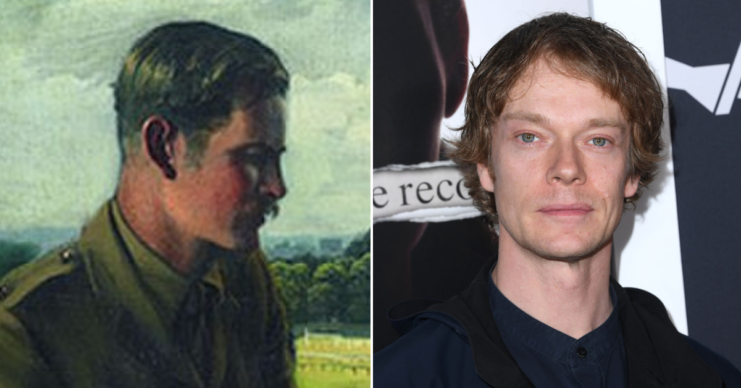
John Steel “Jock” Lewes is portrayed by Alfie Allen in SAS: Rogue Heroes. The co-founder of the Special Air Service, he’s also credited with creating the Lewes bomb, made from a mixture of Nobel 808 plastic explosive and diesel oil.
Born in Calcutta, he was raised in Australia and later studied at Oxford University. Prior to the Second World War, he was among those impressed with the National Socialist German Workers’ Party. It wasn’t until Kristallnacht occurred in November 1938 that he saw the German leadership for what it was.
Initially serving with the Welsh Guards, Lewes later volunteered with Layforce in the Middle East. However, similar to Stirling, he grew frustrated with the commando unit and sought to start his own, leading him and his comrade to form the SAS. He was the man behind the group’s intensive training regiment, which included recruits practicing parachute jumps by leaping out of moving transport trucks.
Lewes’ time with the SAS was short-lived, as he was fatally shot with 20 mm cannon rounds while fighting at the Marble Arch in Libya on December 30, 1941. His death is said to have been a blow to the group’s morale.
Dudley Clarke
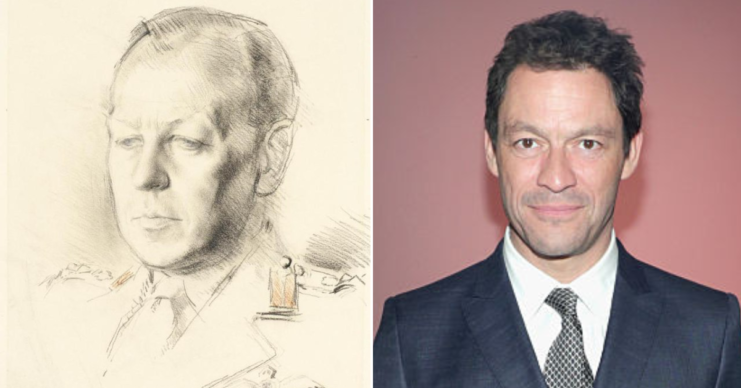
A pioneer of military deception, Dudley Clarke was a South African-born officer in the British Army known for being “the greatest British deceiver of World War II.” After undergoing pilot training in the latter years of the First World War, Clarke conducted intelligence work in the Middle East, before being posted in Palestine to help repress the 1936-39 Arab Revolt. He followed this up by joining Gen. John Dill’s staff, with whom he helped implement the British Commandos.
As the North Africa Campaign got underway, Clarke was summoned to set up a special deception unit. As the action continued, he conducted a number of special missions, including 1941’s Operation Abeam, wherein he fabricated the existence of a British paratrooper regiment in Cairo. He then created the fictional 1st SAS Brigade, leaking fake documents and photos to the Italians. This later influenced David Stirling to create an actual version of the Special Air Service.
More adept at deception tactics, Clarke became bolder, at one point dressing as a woman while on assignment in Madrid. He was subsequently arrested, signalling the start of a string of bad luck incidents, which included being aboard a ship that came under attack by German U-boats. Despite this, his services continued to be in high-demand in North Africa.
As the Allied focus shifted to Europe and the Mediterranean, Clarke and his ‘A’ Force, which had been established in 1941, were called to offer their expertise. They aided in the execution of Operation Mincemeat, while another operation saw Clarke take inspiration from the 1943 war film, Five Graves to Cairo. The master of deception dressed up an actor as Field Marshal Bernard Montgomery to confuse the Germans.
In 1947, after tying up loose ends in Egypt and writing about his efforts throughout World War II, Clarke retired from the British Army with the rank of brigadier. The famed military man is portrayed by Dominic West in SAS: Rogue Heroes.
Robert Blair “Paddy” Mayne
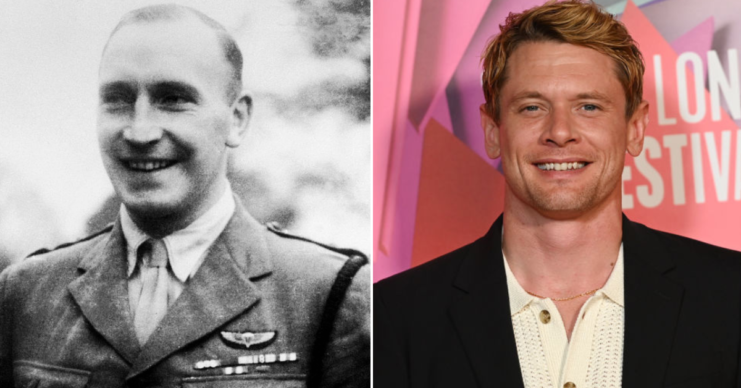
Robert Blair “Paddy” Mayne is portrayed by Jack O’Connell in SAS: Rogue Heroes. Along with being a founding member of the Special Air Service, the lieutenant colonel became one of the British Army’s most decorated servicemen of World War II, despite controversially being denied the Victoria Cross.
Mayne enlisted in the British Army following the outbreak of WWII. After joining the Supplementary Reserve, he served as part of the Royal Artillery and Royal Ulster Rifles, before volunteering for No. 11 (Scottish) Commando following the Dunkirk evacuation.
Conducting a number of night raids with the SAS between 1941-42, Mayne’s shining moment came on July 26, 1942 with a raid on Sidi Haneish Airfield. The successful assault saw the destruction of around 40 German aircraft, at a loss of only two SAS team members. As the North Africa Campaign raged on, he continued to wrack up wins, destroying over 100 enemy aircraft.
Following David Stirling’s capture in January 1943, Mayne became the commanding officer of the 1st SAS Regiment, leading his men throughout campaigns in Sicily, Italy, France and, later, Germany. The regiment was later renamed the Special Raiding Squadron (SRS), and played a critical role in the Allied success at Termoli that September and conducted guerrilla operations with French resistance fighters in France.
While moving through Germany, Mayne rescued a number of his men while under sniper fire by enemy combatants. For this, he was recommended for the Victoria Cross. However, this was downgraded to the Distinguished Service Order (DSO), which he’d been awarded three times prior. His comrades and superiors argued with the British government to upgrade the medal, but their efforts were in vain.
Randolph Churchill
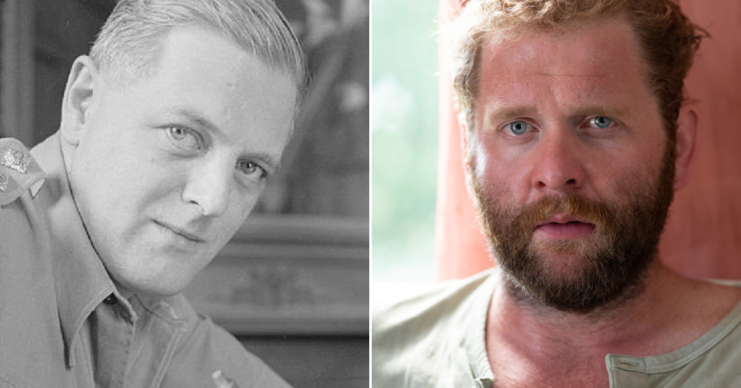
The only son of British Prime Minister Winston Churchill, Randolph Churchill is portrayed by Ian Davies in SAS: Rogue Heroes. A well-read and -spoken man, he attended a number of educational institutions during his youth and even conducted a speaking tour of the US during the 1930s. During the decade, he also began a rather unsuccessful career in politics.
In August 1938, Churchill joined the 4th Queen’s Own Hussars as a second lieutenant in the supplementary reserve, and was called up for active service the following year. In February 1941, after transferring to the No. 8 (Guards) Commando, he was deployed to North Africa, and later served as a General Staff (Intelligence) officer at Middle East Headquarters.
In April 1942, Churchill volunteered to join the Special Air Service, participating in the unit’s first mission. He then traveled to Morocco, where he witnessed the American landings, after which he joined Sir Fitzroy Maclean’s mission in Yugoslavia. He parachuted into the country in early 1944, and was awarded the Most Excellent Order of the British Empire (MBE) following Operation Rösselsprung, the German airdrop outside of Josip Tito’s headquarters.
Churchill was subsequently ordered to take charge of a mission in Croatia, where he failed to earn the respect of his men due to accusations of drunkenness. Following the war, he received a reserve commission with the 4th Hussars Queen’s Own Hussars as a second lieutenant, and was promoted to captain in November 1947. He remained in the reserves until 1961, when he retired with the honorary rank of major.
Neil Ritchie
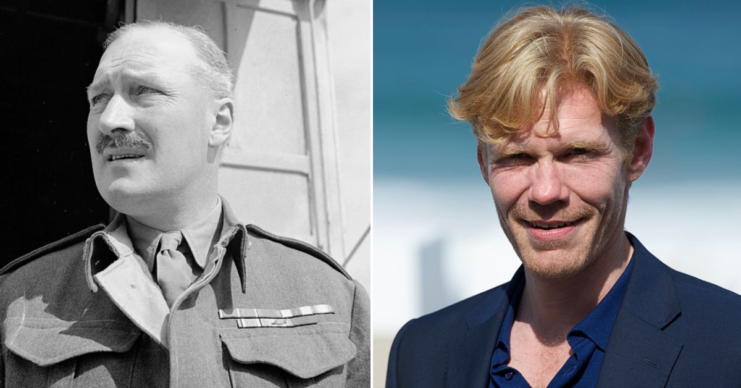
Neil Ritchie is portrayed by Michael Shaeffer in SAS: Rogue Heroes, and is best known for commanding the British Eighth Army in North Africa from November 1941 to June 1942. A career military man who’d previously served in the First World War, he later went on to lead the XII Corps throughout the fighting in Northwest Europe.
During World War I, Ritchie was commissioned as a second lieutenant in the Black Watch, and remained in the Army throughout the interwar period. Prior to the start of World War II, he was transferred to the King’s Only Royal Regiment (Lancaster) and named the commanding officer of the 2nd Battalion. This was a short-lived position, as he was made Brigadier-General Staff (BGS) of II Corps upon the outbreak of the conflict.
After serving in a number of other positions, Ritchie was made the Deputy Chief of the General Staff to Gen. Archibald Wavell, Commander-in-Chief of Middle East Command. During his seven-month command of the Eighth Army, he suffered a number of defeats, including the loss of Tobruk to the Germans, which led to him being fired by Lt. Gen. Claude Auchinleck.
After a brief return to the United Kingdom, Ritchie was given command of the XII Corps. He led his men throughout the Battle of Normandy and into the campaign in Western Europe, the latter earning him the honor of Knight Commander of the Order of the British Empire.
More from us: Held Captive: Airman Richard Keirn Survived Being a Prisoner of War In Both WWII and Vietnam
Want to become a trivia master? Sign up for our War History Fact of the Day newsletter!
Following the war, Ritchie remained in the British Army, holding the ceremonial appointment of Aide-de-camp general to King George VI. He retired in 1951 with the rank of general.
